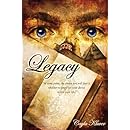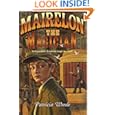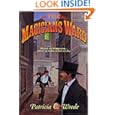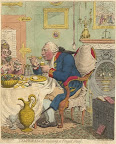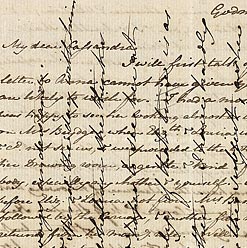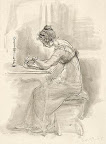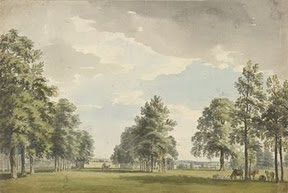What I've Read This Week . . .
The Sca ndalous Widow by Evelyn Richardson -- Regency Romance
ndalous Widow by Evelyn Richardson -- Regency Romance
Lady Catherine Granville is a young widow who has been ruthlessly shoved aside by the greedy new Lord Granville and his social climbing wife. Though Catherine has been left with enough money to live comfortably, she can't rest unless she's doing good works. Her latest and most ambitious project is an academy for young ladies to learn how to be more than "decorative objects for the marriage mart." Unfortunately for Catherine, the new Lord and Lady Granville are furious about having their name connected with trade and will do anything to shut down Catherine's school. Lady Granville turns to her lover, the rakish Marquess of Charlmont to order Catherine to cease and desist. Flattered into agreeing to try, Lord Charlmont decides to investigate Catherine's school for his headstrong niece. When Lord Charlmont and Lady Catherine Granville meet, they discover that they had once been friends, ten years ago during Catherine's first season, but their friendship was ended when Charlmont ran off. Charlmont would like to renew his friendship with Catherine, whom he greatly admires, but she resents the intrusion of a man into her well-ordered life. Charlmont doesn't give up easily and there may come a time when Catherine needs his assistance to fight against the injustices of the world and her heart may not be up to the task. Catherine is an incredibly admirable character because she is so fiercely independent and unwilling to rely on anyone for help. She is true to her beliefs, even in the end. Charlmont, rake that he seems to be, is deeper than he appears and as his story unfolded, I grew to respect him as well. Though the characters think and act very modern, there was a growing reform movement at the time and certainly there were educated, strong-minded women and followers of Mary Wollstonecraft, so I am willing to believe it. It's a romance novel and not a serious work. I enjoyed this novel and if you like well-developed characters and plots with meaning, you will too.
 A Foreign Affair by Evelyn Richardson -- Regency Romance
A Foreign Affair by Evelyn Richardson -- Regency Romance
The Princess Louisa von Hohenbachern and her daughter, Miss Helena Deveraux have come from their minor German principality to Vienna for the Congress of Vienna. Hoping to enjoy herself while her husband is away, Princess von Hohenbachern strikes up a flirtation with the handsome Lord Major Brett Stanford, in town as a French translator on request from Wellington. Helena eschews the social scene, preferring instead to study politics. Helena also enjoys racing her horse in the park, where she happens to spy Lord Major Stanford practicing tricks on his handsome stallion. Helena discovers that the Lord Major is her mother's latest flirt when he mistakes her for a maid in her own house. She takes delight in watching his discomfort when he learns her true identity and soon the two are discussing politics and horses, forming a close relationship that may be more than Helena is prepared to admit. Helena is determined to be independent and self-reliant. She has seen too much of what happens when passion burns out and refuses to allow that to happen to her. When Napolean escapes from Elba, their entire way of life is threatened and Helena must realize the truth of what is at stake. This is a quiet, better than average Regency. The heroine and hero slowly come to terms with their feelings for one another. The beginning of the book is very slow with entirely too much politics. As one who doesn't remember her European history class, I found the discussions confusing and tedious. I really liked the romance, though. It developed slowly and realistically over time as the characters share a passion for politics that develops into something more. The downside to the plot is the little bit of intrigue that never really develops. I really liked Helena and could relate to her a lot. She's a modern heroine, typical of Richardson's novels, but she's also a Regency heroine with realistic expectations about relationships. Brett is a softer, quieter hero than Richardson's usual rakes and tonnish gentlemen, but I kind of liked the change because it made the romance develop better when he wasn't lusting after Helena or visiting his mistress. The political tensions add a nice element to the story and move the romance forward. The writing is really good, aside from the boring political elements and I think this is one of the better Regencies out there, but not one of the best.
 The Rake and the Wallflower by Allison Lane -- Regency Romance
The Rake and the Wallflower by Allison Lane -- Regency Romance
Miss Mary Seabrook has accompanied her sister Laura to London for their come-out. Promised by her brother-in-law that she would be able to meet others who share her scholarly interests in birds, Mary looks forward to the Season. The Season does not turn out to be quite what Mary expected. First, there's her sister Laura, a diamond of the first water and a spoiled brat determined to get rid of Mary and outshine everyone else. While hiding from the advances of an overly familiar gentleman, Mary takes to sketching the members of the ton as the animals their personalities most resemble. Lord Grayson is also hiding from scheming minxes, like Mary's sister, who think they are attracted to him because of his dangerous past. When Gray discovers Mary and her sketches, he is intrigued. Sensing that Mary is shy and nervous, he immediately puts her at ease, as he has often done for other shy misses in the past, much to his regret. One of those shy misses took her own life, accusing him of getting her with child. The incident of Miss Turner, combined with another young miss who set out to trap him into marriage by scheming, have contributed to his social ruination. Mary knows she shouldn't be talking with Gray, but he's so kind that she can't help liking him. Laura becomes a sensation, though not in the way she dreamed of, and is determined to have her own way and ruin her reputation and Mary's as well. Gray helps Mary find her confidence in order to save herself and when mysterious and dangerous happenings start to affect Gray, Mary is convinced he's innocent of all past wrongdoing and is determined to catch the would-be murderer and the true seducer of poor Miss Turner. Along the way, Mary falls for this kind, sensitive man who shares her scholarly interests and he discovers the pleasure of finding a woman who appreciates him for his own sake and not just his scandalous reputation.I had a hard time liking this book. Mary and Gray are both likable and I wouldn't even classify Gray as a rake. He's much more kind and sensitive than most other Regency heroes thanks to his bullying father and kind mother. Laura is deranged and I can't think of why anyone wouldn't see through her. She belongs in a mental institution, even though they were nasty places. The plot leaves a lot to be desired. It's somewhat long and the mysteries seem to be solved too easily once the villains were discovered. There isn't a full explanation of what exactly happened to Mary's family 18 months ago. She shares a little bit of the story with Gray and Laura's story also comes out but I was left wondering what happened to Mary's father and Catherine's first husband. The plot is also darker than I would prefer and the characters have a hard time controlling their passions and get a little bit too carried away in some incredibly stupid and pointless scenes. This book falls high on the AAR subtle category. I wouldn't recommend this one to true devotees of good literature or well-written Regency novels.
The Sca
 ndalous Widow by Evelyn Richardson -- Regency Romance
ndalous Widow by Evelyn Richardson -- Regency RomanceLady Catherine Granville is a young widow who has been ruthlessly shoved aside by the greedy new Lord Granville and his social climbing wife. Though Catherine has been left with enough money to live comfortably, she can't rest unless she's doing good works. Her latest and most ambitious project is an academy for young ladies to learn how to be more than "decorative objects for the marriage mart." Unfortunately for Catherine, the new Lord and Lady Granville are furious about having their name connected with trade and will do anything to shut down Catherine's school. Lady Granville turns to her lover, the rakish Marquess of Charlmont to order Catherine to cease and desist. Flattered into agreeing to try, Lord Charlmont decides to investigate Catherine's school for his headstrong niece. When Lord Charlmont and Lady Catherine Granville meet, they discover that they had once been friends, ten years ago during Catherine's first season, but their friendship was ended when Charlmont ran off. Charlmont would like to renew his friendship with Catherine, whom he greatly admires, but she resents the intrusion of a man into her well-ordered life. Charlmont doesn't give up easily and there may come a time when Catherine needs his assistance to fight against the injustices of the world and her heart may not be up to the task. Catherine is an incredibly admirable character because she is so fiercely independent and unwilling to rely on anyone for help. She is true to her beliefs, even in the end. Charlmont, rake that he seems to be, is deeper than he appears and as his story unfolded, I grew to respect him as well. Though the characters think and act very modern, there was a growing reform movement at the time and certainly there were educated, strong-minded women and followers of Mary Wollstonecraft, so I am willing to believe it. It's a romance novel and not a serious work. I enjoyed this novel and if you like well-developed characters and plots with meaning, you will too.
 A Foreign Affair by Evelyn Richardson -- Regency Romance
A Foreign Affair by Evelyn Richardson -- Regency RomanceThe Princess Louisa von Hohenbachern and her daughter, Miss Helena Deveraux have come from their minor German principality to Vienna for the Congress of Vienna. Hoping to enjoy herself while her husband is away, Princess von Hohenbachern strikes up a flirtation with the handsome Lord Major Brett Stanford, in town as a French translator on request from Wellington. Helena eschews the social scene, preferring instead to study politics. Helena also enjoys racing her horse in the park, where she happens to spy Lord Major Stanford practicing tricks on his handsome stallion. Helena discovers that the Lord Major is her mother's latest flirt when he mistakes her for a maid in her own house. She takes delight in watching his discomfort when he learns her true identity and soon the two are discussing politics and horses, forming a close relationship that may be more than Helena is prepared to admit. Helena is determined to be independent and self-reliant. She has seen too much of what happens when passion burns out and refuses to allow that to happen to her. When Napolean escapes from Elba, their entire way of life is threatened and Helena must realize the truth of what is at stake. This is a quiet, better than average Regency. The heroine and hero slowly come to terms with their feelings for one another. The beginning of the book is very slow with entirely too much politics. As one who doesn't remember her European history class, I found the discussions confusing and tedious. I really liked the romance, though. It developed slowly and realistically over time as the characters share a passion for politics that develops into something more. The downside to the plot is the little bit of intrigue that never really develops. I really liked Helena and could relate to her a lot. She's a modern heroine, typical of Richardson's novels, but she's also a Regency heroine with realistic expectations about relationships. Brett is a softer, quieter hero than Richardson's usual rakes and tonnish gentlemen, but I kind of liked the change because it made the romance develop better when he wasn't lusting after Helena or visiting his mistress. The political tensions add a nice element to the story and move the romance forward. The writing is really good, aside from the boring political elements and I think this is one of the better Regencies out there, but not one of the best.
 The Rake and the Wallflower by Allison Lane -- Regency Romance
The Rake and the Wallflower by Allison Lane -- Regency RomanceMiss Mary Seabrook has accompanied her sister Laura to London for their come-out. Promised by her brother-in-law that she would be able to meet others who share her scholarly interests in birds, Mary looks forward to the Season. The Season does not turn out to be quite what Mary expected. First, there's her sister Laura, a diamond of the first water and a spoiled brat determined to get rid of Mary and outshine everyone else. While hiding from the advances of an overly familiar gentleman, Mary takes to sketching the members of the ton as the animals their personalities most resemble. Lord Grayson is also hiding from scheming minxes, like Mary's sister, who think they are attracted to him because of his dangerous past. When Gray discovers Mary and her sketches, he is intrigued. Sensing that Mary is shy and nervous, he immediately puts her at ease, as he has often done for other shy misses in the past, much to his regret. One of those shy misses took her own life, accusing him of getting her with child. The incident of Miss Turner, combined with another young miss who set out to trap him into marriage by scheming, have contributed to his social ruination. Mary knows she shouldn't be talking with Gray, but he's so kind that she can't help liking him. Laura becomes a sensation, though not in the way she dreamed of, and is determined to have her own way and ruin her reputation and Mary's as well. Gray helps Mary find her confidence in order to save herself and when mysterious and dangerous happenings start to affect Gray, Mary is convinced he's innocent of all past wrongdoing and is determined to catch the would-be murderer and the true seducer of poor Miss Turner. Along the way, Mary falls for this kind, sensitive man who shares her scholarly interests and he discovers the pleasure of finding a woman who appreciates him for his own sake and not just his scandalous reputation.I had a hard time liking this book. Mary and Gray are both likable and I wouldn't even classify Gray as a rake. He's much more kind and sensitive than most other Regency heroes thanks to his bullying father and kind mother. Laura is deranged and I can't think of why anyone wouldn't see through her. She belongs in a mental institution, even though they were nasty places. The plot leaves a lot to be desired. It's somewhat long and the mysteries seem to be solved too easily once the villains were discovered. There isn't a full explanation of what exactly happened to Mary's family 18 months ago. She shares a little bit of the story with Gray and Laura's story also comes out but I was left wondering what happened to Mary's father and Catherine's first husband. The plot is also darker than I would prefer and the characters have a hard time controlling their passions and get a little bit too carried away in some incredibly stupid and pointless scenes. This book falls high on the AAR subtle category. I wouldn't recommend this one to true devotees of good literature or well-written Regency novels.






